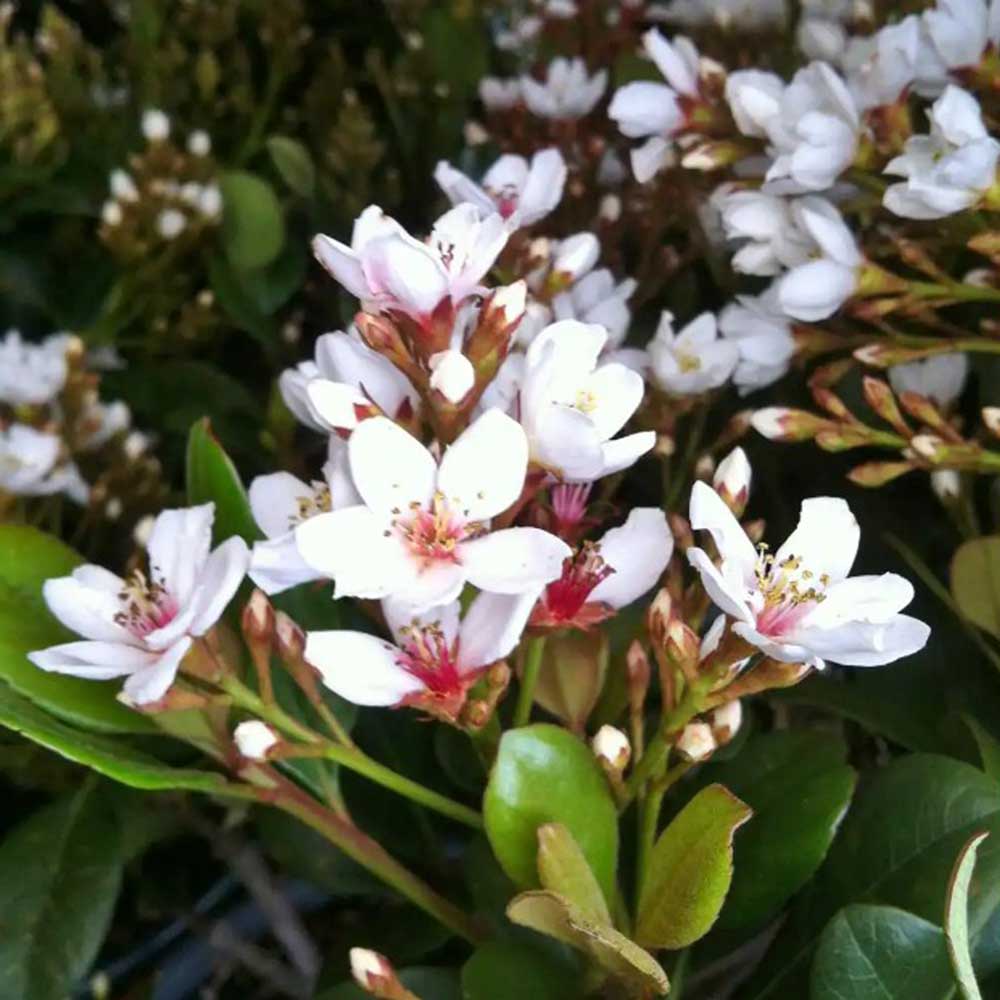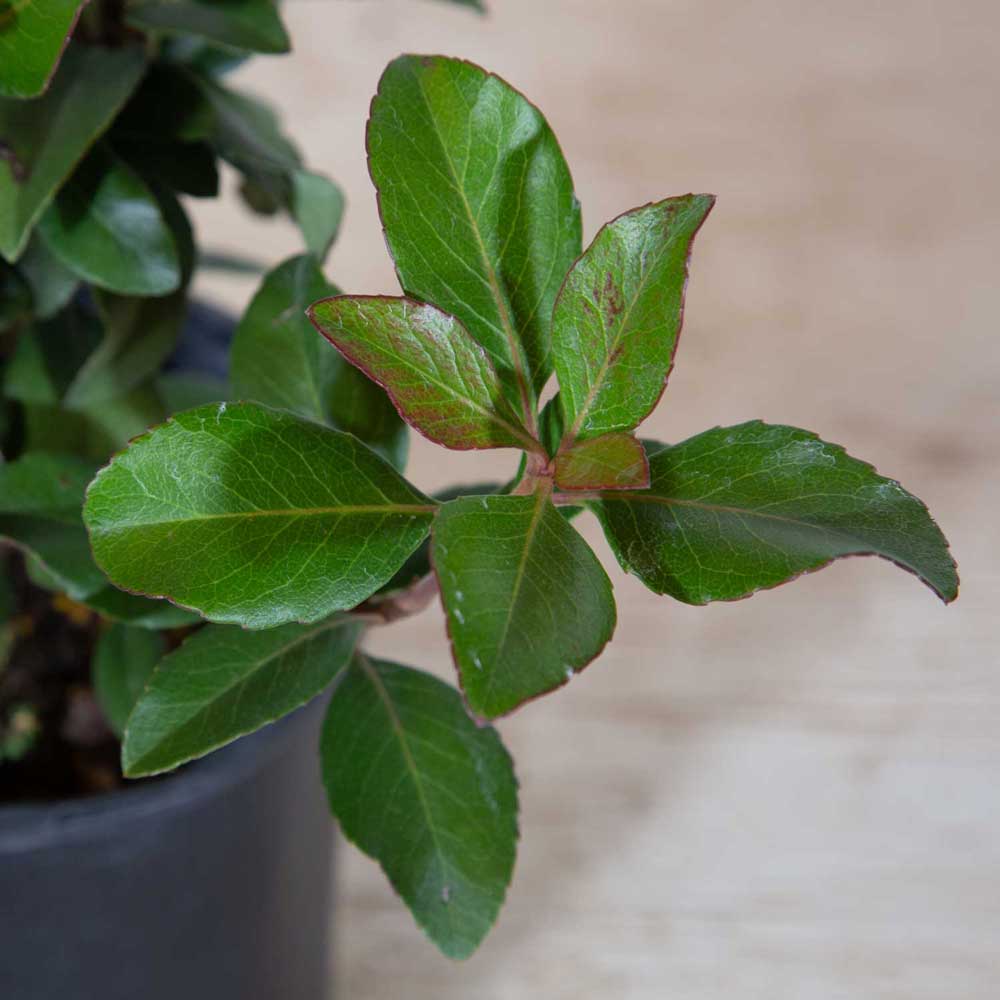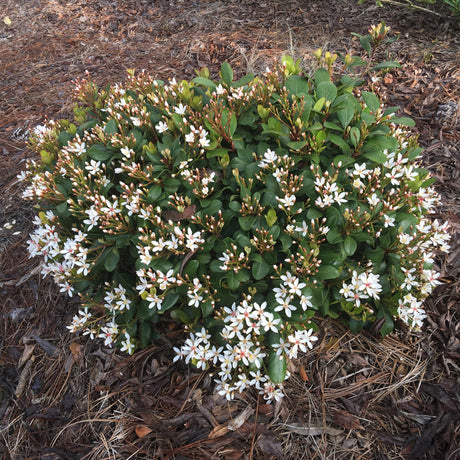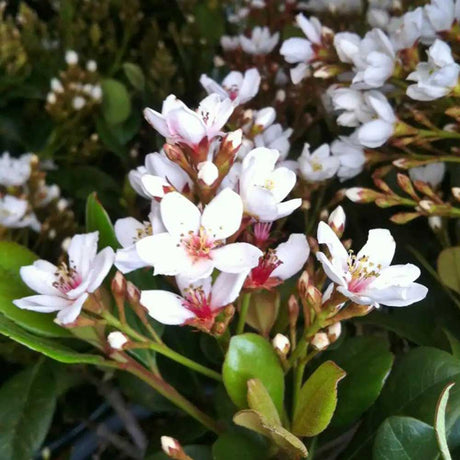Snow White Indian Hawthorn
Snow White Indian Hawthorn - 2.5 Quart is backordered and will ship as soon as it is back in stock.
Couldn't load pickup availability
Description
Description
The Snow White Indian Hawthorn is a charming shrub that brings elegance to any garden or landscape all year long. With its glossy green leaves and beautiful white flowers, it's sure to be a standout feature.
This shrub has a compact and rounded growth habit, making it an ideal choice for small gardens or as a border plant. It typically grows to a height and width of 3 to 4 feet, creating a dense and lush appearance.
The Snow White Indian Hawthorn is highly adaptable and thrives in various conditions. It can tolerate full sun to partial shade, although it prefers at least 6 hours of direct sunlight daily. Once established, it is drought-tolerant, offering a low-maintenance option for gardeners.
Suitable for USDA hardiness zones 7 to 11 making it ideal for many regions across the southern United States.
Planting Indian Hawthorn
This shrub is known for its stunning clusters of delicate white flowers, which add sophistication to your garden and emit a sweet fragrance. Whether used as a focal point or part of a larger planting scheme, it creates a stunning visual impact.
Its evergreen leaves are a rich, dark green, providing year-round interest and a lush backdrop for the white flowers. It can be used as a standalone shrub, hedge, or in containers. Its compact size suits small gardens or urban spaces, while its low maintenance needs make it ideal for busy gardeners.
Best Time to Prune Hawthorn Shrubs
Pruning a Snow White Indian Hawthorn (Rhaphiolepis umbellata 'Snow White') is essential for maintaining its health and encouraging vibrant growth.
The ideal time to prune is just before new growth begins, usually between late February and early April. This timing allows you to shape the tree before it leafs out, minimizing stress and encouraging a strong growth response.
Pruning Techniques
-
Remove Dead or Diseased Wood: Start by cutting out any dead, damaged, or diseased branches. This helps prevent the spread of disease and improves overall plant health.
-
Thin Out Dense Areas: If the tree has a lot of overlapping branches, selectively thin them out to allow for better air circulation and sunlight penetration. Aim to remove branches that are crossing or rubbing against each other.
-
Shape the Tree: After removing unwanted wood, focus on shaping the tree. You can prune back longer branches to create a more balanced appearance. Aim for a natural shape that promotes growth.
-
Light Pruning for Size Control: If the tree is getting too large, you can lightly prune it back to maintain its desired size. Be cautious not to remove more than one-third of the plant at a time.
-
Use Clean Tools: Ensure your pruning tools are sharp and clean to make smooth cuts and reduce the risk of infection.
Care & Use
Care & Use
Spacing Recommendations
Spacing Recommendations
-
Scientific Name
-
Hardiness Zone7, 8, 9, 10, 11
-
Sun ExposureFull Sun to Part Shade
-
Evergreen or DeciduousEvergreen
-
FeaturesAromatic, Flowering
-
Feature ColorGreen, White
-
UsesXeriscaping, Accent, Border, Hedge
-
Water NeedsMedium
-
Bloom SeasonWinter, Spring
Growing Zones : 7, 8, 9, 10, and 11

















